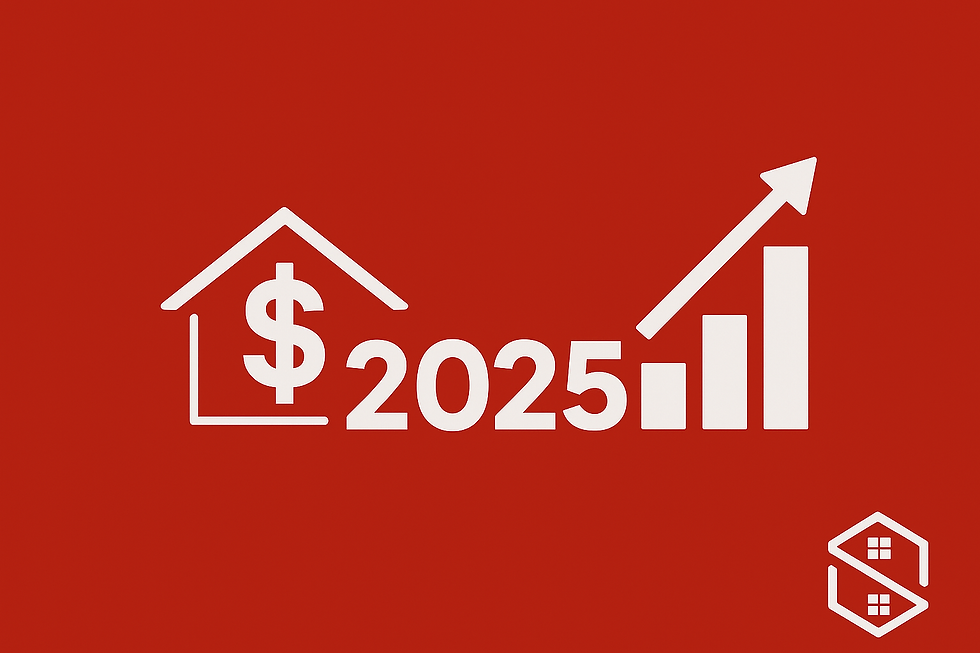HELOC vs. HELOAN for Investors: A Timeline Breakdown You Need to Know
- StratoBridge Lending
- 31 minutes ago
- 3 min read
Real estate investors are always looking for flexible, cost-effective ways to access capital—especially in a market where opportunities move quickly and financing needs to keep up. Two of the most powerful tools available to investors today are HELOCs (Home Equity Lines of Credit) and HELOANs (Home Equity Loans).
Both allow you to tap the equity in your property, but the way their timelines, draw periods, and repayment structures work can dramatically impact your strategy, cash flow, and long-term returns.
If you're investing, renovating, or refinancing in Texas, Colorado, or Pennsylvania—or anywhere nationwide—understanding the differences between these two equity products is essential. Let’s break down exactly how HELOCs and HELOANs work, what timelines to expect, and how to choose the right option for your investment goals.
HELOC vs. HELOAN: The Basics
Before diving into the timeline differences, here’s a quick refresher:
What Is a HELOC?
A Home Equity Line of Credit is a revolving credit line.Think of it like a credit card with a much higher limit and far lower interest.
You can:
Draw money as needed
Pay it back
Draw again
Use it for future investments or renovations
Key benefit: Maximum flexibility.
What Is a HELOAN?
A Home Equity Loan is a fixed lump sum you borrow upfront.It comes with:
A fixed rate
A fixed term
Predictable monthly payments
Key benefit: Stability and predictability.
Timeline Breakdown: HELOC vs. HELOAN for Investors
HELOC Timeline: Draw Period → Repayment Period
A HELOC has two major phases that matter for investors:
Phase 1: Draw Period (Typically 5–10 years)
During this time, you can:
Access funds whenever you want
Borrow up to your approved credit limit
Make interest-only payments (in most cases)
Use the funds for down payments, renovations, or emergencies
Why investors love this phase:You only pay interest on the money you actually use—ideal for flips, BRRRR strategies, and short-term opportunities.
Example uses:
Renovation budget
Down payment for investment property
Bridge financing
Emergency liquidity
Paying contractors in phases
Phase 2: Repayment Period (Typically 10–20 years)
Once the draw period ends, the HELOC closes to new withdrawals.
During this phase:
Principal + interest payments begin
Monthly payments increase
The line must be paid off on schedule
Investor note:This shift can dramatically impact cash flow if not planned for in advance.
HELOAN Timeline: Upfront Lump Sum → Fixed Repayment
Unlike a HELOC, a HELOAN offers no draw period. You receive the entire approved amount at closing.
Fixed Term (5–30 years)
Full monthly payments (principal + interest) begin immediately
Interest rate remains fixed
Payment schedule predictable and stable
Why investors choose HELOANs:
Ideal for large renovations
Great for locking in today’s rates
Works well for investors who prefer fixed monthly costs
Which Option Fits Your Investment Strategy?
Choose a HELOC if you want:
Flexibility
Access to recurring funds
Interest-only payments during draw period
Cash on demand for offers or renovations
To leverage equity without committing to a large payment immediately
Best for:BRRRR investors, fix-and-flippers, landlords building a portfolio, or anyone who values flexibility.
Choose a HELOAN if you want:
A fixed rate
Predictable monthly payments
A lump sum for a large project
Long-term budget stability
To lock in a loan with no future payment “jump”
Best for:Renovations, debt consolidation, long-term holds, major upgrades, or portfolio stabilization.
Timeline Example for Investors
Investor A: Using a HELOC
Draw $60,000 for renovation
Pay interest-only for 18 months
Refi into DSCR loan after value increases
Re-use HELOC for next property
Result: Maximum recycling of capital.
Investor B: Using a HELOAN
Takes $120,000 lump sum for major rehab
Project spans 12–18 months
Predictable payment structure
Holds property for rental income
Result: Long-term stability + project clarity.
HELOC vs. HELOAN: Impact on Cash Flow
Feature | HELOC | HELOAN |
Draw Period | Yes | No |
Payment Type (Initial) | Interest-only | Full P&I |
Flexibility | High | Medium |
Payment Stability | Low | High |
Investor Use Case | Short-term / BRRRR | Long-term / Large Projects |
How StratoBridge Lending Helps Investors
Choose the Right Option
At StratoBridge Lending, we work with investors across Texas, Colorado, Pennsylvania, and nationwide, helping them choose between HELOCs, HELOANs, QM programs, and flexible Non-QM alternatives like DSCR or bank-statement loans.
We offer:
Real-time, no-credit-impact loan estimates
Investor-friendly Non-QM programs
Competitive HELOC & HELOAN options
Guidance on timelines, payments, and long-term ROI
Personalized strategy for your portfolio
Whether you want flexibility or stability, our team helps you structure financing that supports your long-term investment goals—without unnecessary risk.
Understanding the timeline differences between HELOCs and HELOANs is essential for making profitable investment decisions.
Choose a HELOC if you need flexibility, recurring access to cash, and low initial payments.
Choose a HELOAN if you want stability, predictable monthly costs, and a fixed repayment schedule.
Both can be powerful tools—but the right one depends entirely on your timeline, project scope, and investment strategy.
👉 Ready to explore your options? Check real-time estimates or request a no-credit-pull quote.





Comments